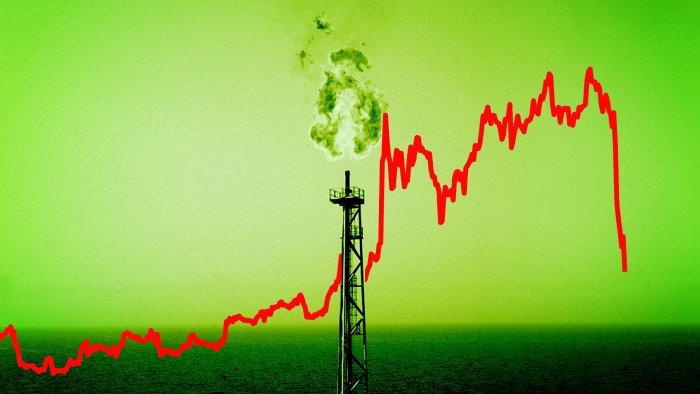On Monday, as Iran launched missiles at a US military base in Qatar, oil traders reacted quickly—not by buying, but by selling.
Just seven minutes after the first missile was fired around 5.30pm London time, Brent crude, the global oil standard, began to decrease in value. Within 20 minutes, the price had dropped by 3 percent. By 7.30pm, it plummeted 7.2 percent to $71.48, marking its largest daily decline in almost three years.
The promptness of the sell-off, given that markets usually rise amid geopolitical conflict, surprised many. While civilians sought shelter and news channels aired missile footage, traders correctly anticipated that the missile strikes would ease, not escalate, tensions between the US, Israel, and Iran.
“It’s all planned; we know the base is mostly empty. I knew the base was empty since June 18,” said Jorge Montepeque, an oil analyst at Onyx Capital Group, in a text just after the attack. “We’ve seen this scenario before.”
Traders followed social media and open-source intelligence vigilantly since hostilities escalated between Israel and Iran. “Everyone is monitoring Twitter and intelligence accounts to understand the situation,” stated an executive at a major oil trading firm.
For instance, oil traders scrutinized satellite footage of Al Udeid air base in Qatar, home to 10,000 US troops. The images indicated that the US had withdrawn planes from the base days before launching airstrikes on Iran’s nuclear sites and before Tehran’s missile retaliation.

This information led traders to draw two conclusions: the missile strikes were mainly symbolic, and since Iran had shown it could respond to US attacks, it was less likely to target vulnerable assets like oil infrastructure in the region.
Throughout the ongoing conflict, oil and gas continued to flow smoothly, with Iran even boosting its exports due to its inability to refine enough crude domestically, as noted by energy consultancy Rystad.
This behavior reflects a characteristic of the oil market: traders often maintain supply during turmoil when other sectors may falter.
The market’s reaction on Monday mirrored its behavior a week earlier, when crude prices spiked as much as 5.5 percent after Israeli airstrikes on Iranian gas facilities, only to drop again once indications of peace talks emerged.
Both instances highlight a prevailing question since the conflict began: would Iran pose a threat to oil tankers in the Strait of Hormuz, the crucial passage connecting Gulf suppliers to global markets?
“Everyone was worried about attacks in the Strait. Once it became clear this wasn’t a concern, the risk premium diminished,” stated Amrita Sen, founder of the market analysis firm Energy Aspects.
Oil trading experts pointed out a trend: price surges due to geopolitical tensions often fade quickly. “This isn’t comparable to the Ukraine-Russia situation, where trade shifts require a lengthy adjustment. Here, the market looks to sell any price spikes,” noted one oil trader.
Montepeque shared this sentiment, noting that it’s now common practice to sell off after significant developments. “If you read the market effectively, you can position yourself advantageously, realize profits, and then sell.”
Though the market expected conflict when oil prices began to rise before Israel’s initial attack, the overall climate has left traders hesitant to invest heavily in price increases. The global oil supply remains robust, with the Opec+ oil cartel increasing output significantly in recent months, while US shale producers are keeping production at record highs.
RBC strategist Helima Croft mentioned that the White House likely opted not to tap into the Strategic Petroleum Reserve amid the recent energy market turbulence because officials “were confident they had alternative sources of spare barrels in case of significant disruptions.”

Many analysts predict the world might be oversupplied with crude by the year’s end, further pressuring prices. “People still speculate that oil will drop to $50 or $60,” observed Sen. “Once the perceived risks fade, attention shifts back to the fundamentals.”
A tentative ceasefire between Iran and Israel, facilitated by President Trump, led to another sell-off on Tuesday, with Brent losing 6.1 percent to just above $67 a barrel, dipping below its pre-war trading level.
“The general sentiment is that Iran can’t escalate further, and closing the Strait would primarily harm China, their only notable ally,” remarked one oil trader. “The Israelis have limited options now; the nuclear threat has diminished, and any further hostility from them wouldn’t likely be well received.”
Analysts noted that market price changes were also influenced by positioning in options—derivatives that gain value when oil prices rise or fall toward a specified price.
As oil markets faced pressure even before the Iran-Israel conflict began, some producers purchased “put” options, which provide payouts if crude prices decline.
Dealers manage these positions by buying futures, which are the primary tools in oil trading used to determine global oil pricing.
“As Brent prices dropped, the likelihood of dealers needing to pay out increased. Consequently, they had to sell more futures,” explained Ilia Bouchouev, a former president of US commodity trading company Koch Global Partners. This additional selling contributed to the steep decline on Monday, he added.
Al Munro, a broker at Marex, commented: “There was a frantic rush upward and then an equally frantic rush downward.”


